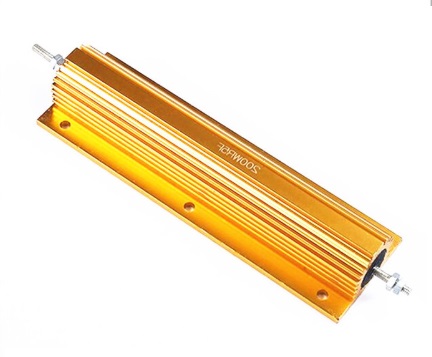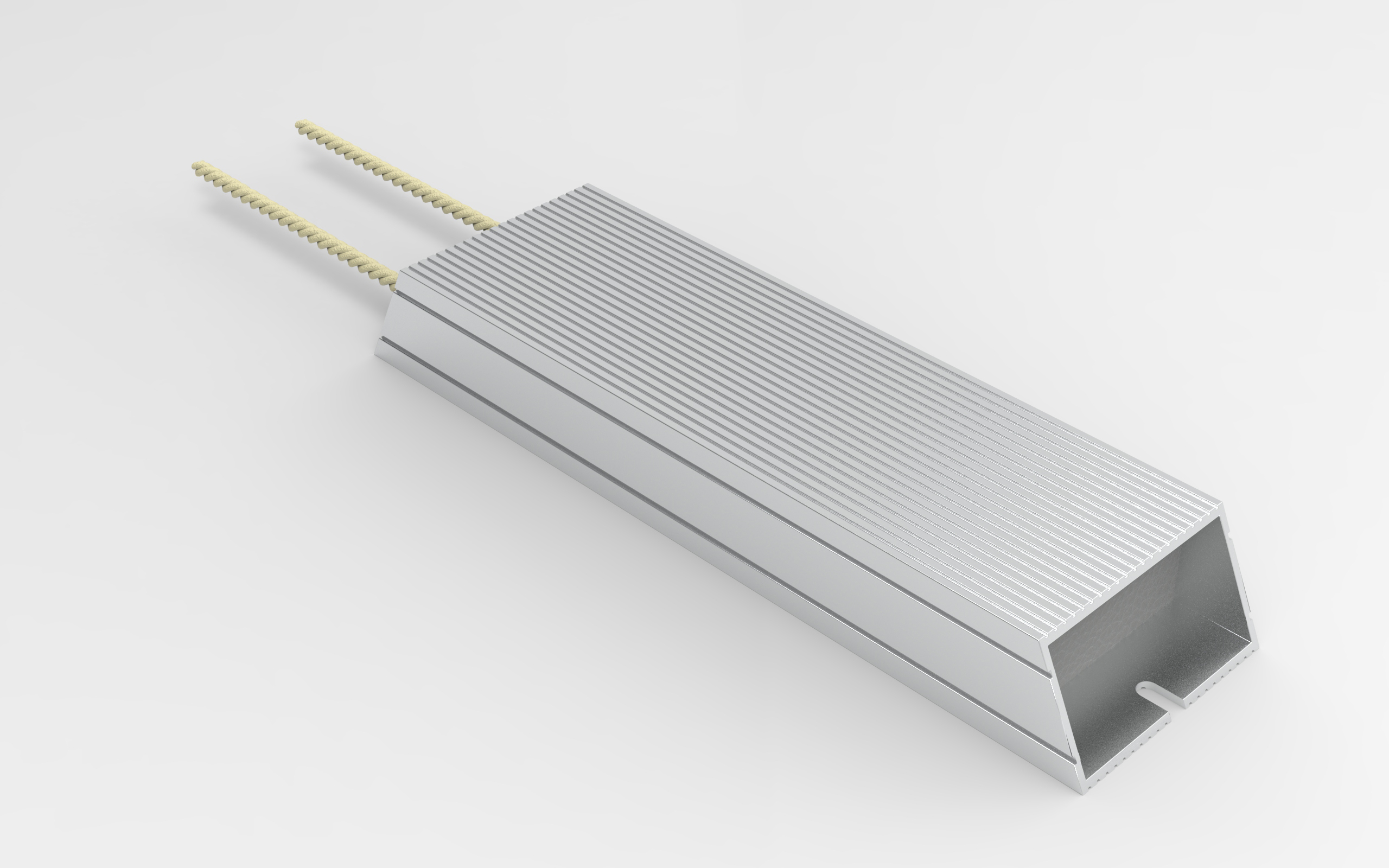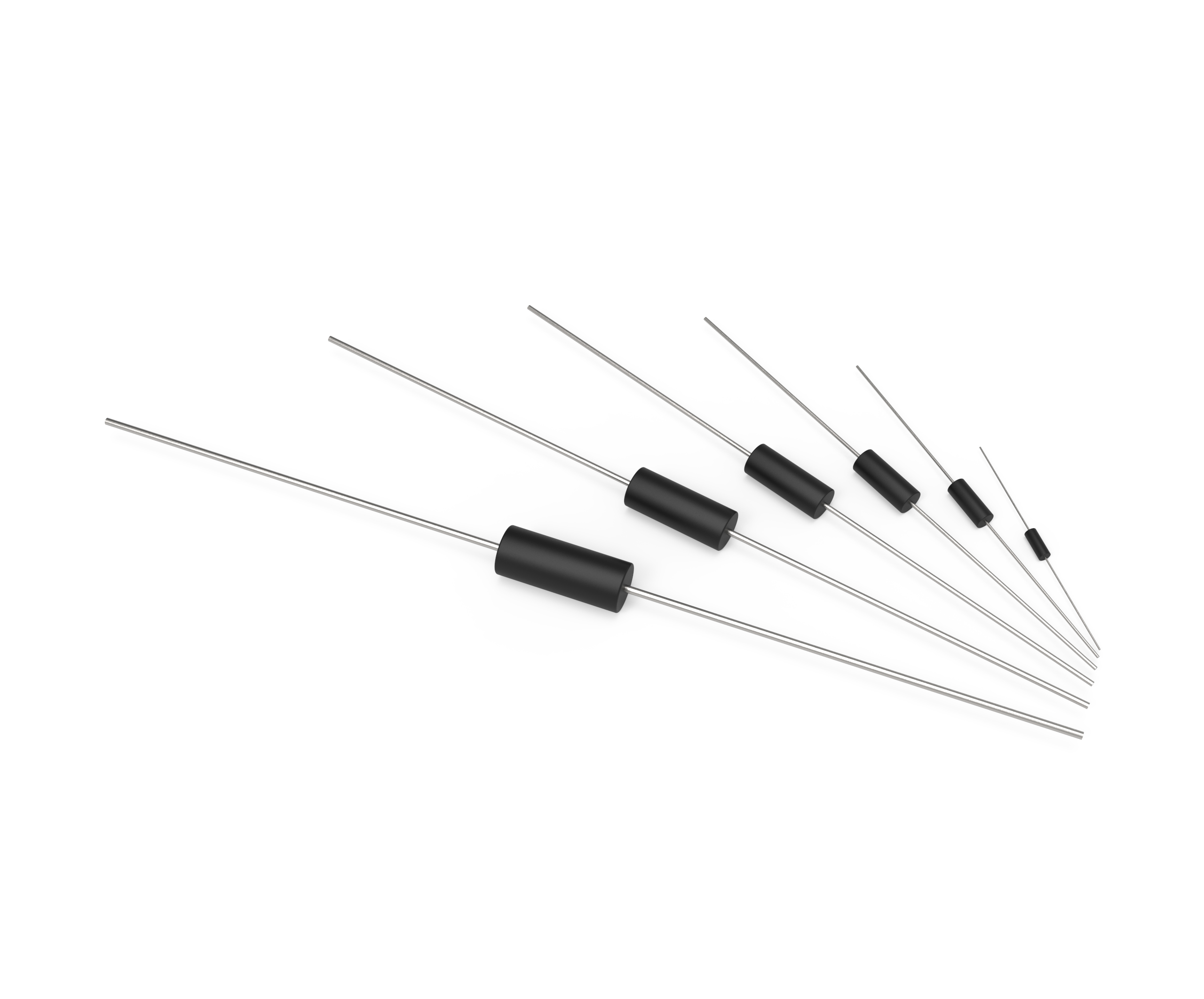Position:Home » Technical Articles
Precision and Power Wire Wound Resistors
Writer:Microhm Page View:Date:2019-07-12
Wire wound resistors can roughly be classified in two types: power and precision. They can be modified for use in current and temperature sensors and potentiometers. These versatile resistors can be used in a wide range of applications.
Wire wound resistors exist for very high power applications. The range varies from 0.5 watts till more than 1000 watts. Power wirewound resistors can be divided in types according to the coating type. Silicone resins are used for the lowest dissipation levels. They are compact resistors that can withstand temperature rises up to 300°C above the ambient temperature.

Another type of coating is vitreous enamel. This traditional coating has good insulating properties at low temperatures, but at full rated temperature the insulation is considerably less. This property makes it less and less common. The maximum working surface temperature is up to 400°C. TCR varies from 75 till 200 ppm/°C. Typical resistance values are in the range from 1Ω til 10 kΩ. Microhm Nual series is a kind of typical power metal-clad wirewound resistor.

For the highest dissipation values the resistor has a aluminum case with fins. These fins give a larger surface area from which to dissipate heat, letting the resistor handle more power without being damaged. These resistors have a ceramic core and a silicone resin coating, encased in an aluminum extrusion. The surface is anodized to maintain a good insulation resistance. These resistors have a typical power rating of 25 to 50 watts. This assumes that the resistor will be mounted on a metal surface, so that the heat can dissipate better. The maximum surface temperature is around 300°C and the TCR is low with around 25 ppm/°C for the ohmic values above 50Ω. Usually the TCR is higher for lower resistance values.
 High precision wire wound resistors typically used in precision AF attenuators, measuring bridges and calibration equipment. Typical values for the tolerance of the resistance value is 0.1% or better. The temperature coefficient of resistance lies around 5 ppm/°C, which is considerably better than most metal film resistors (around 25 ppm/°C). The stability is fairly good, with values like 35 ppm change for a year of operation at full power rating. The temperature rise of these resistors is usually below 30°C. Therefore they can be coated by epoxy resin materials.In practice, a designer might decide that a resistor needs to be within ±0.05% of the design value for a particular circuit application. To account for aging, TCR and other parameters, the designer might then specify a tolerance of ±0.01%. This ensures that the resistor stays within the required resistance range over time and varying circuit conditions. These kind of resistors extremely fix the application of precision instrument, such as Microhm's wirewound precision resistors MPF seriese and EE series.
High precision wire wound resistors typically used in precision AF attenuators, measuring bridges and calibration equipment. Typical values for the tolerance of the resistance value is 0.1% or better. The temperature coefficient of resistance lies around 5 ppm/°C, which is considerably better than most metal film resistors (around 25 ppm/°C). The stability is fairly good, with values like 35 ppm change for a year of operation at full power rating. The temperature rise of these resistors is usually below 30°C. Therefore they can be coated by epoxy resin materials.In practice, a designer might decide that a resistor needs to be within ±0.05% of the design value for a particular circuit application. To account for aging, TCR and other parameters, the designer might then specify a tolerance of ±0.01%. This ensures that the resistor stays within the required resistance range over time and varying circuit conditions. These kind of resistors extremely fix the application of precision instrument, such as Microhm's wirewound precision resistors MPF seriese and EE series.
Wire wound resistors exist for very high power applications. The range varies from 0.5 watts till more than 1000 watts. Power wirewound resistors can be divided in types according to the coating type. Silicone resins are used for the lowest dissipation levels. They are compact resistors that can withstand temperature rises up to 300°C above the ambient temperature.

Another type of coating is vitreous enamel. This traditional coating has good insulating properties at low temperatures, but at full rated temperature the insulation is considerably less. This property makes it less and less common. The maximum working surface temperature is up to 400°C. TCR varies from 75 till 200 ppm/°C. Typical resistance values are in the range from 1Ω til 10 kΩ. Microhm Nual series is a kind of typical power metal-clad wirewound resistor.

For the highest dissipation values the resistor has a aluminum case with fins. These fins give a larger surface area from which to dissipate heat, letting the resistor handle more power without being damaged. These resistors have a ceramic core and a silicone resin coating, encased in an aluminum extrusion. The surface is anodized to maintain a good insulation resistance. These resistors have a typical power rating of 25 to 50 watts. This assumes that the resistor will be mounted on a metal surface, so that the heat can dissipate better. The maximum surface temperature is around 300°C and the TCR is low with around 25 ppm/°C for the ohmic values above 50Ω. Usually the TCR is higher for lower resistance values.

Keywords:Wire wound r
Latest News
- Resistor's role in measuring and correcting LED,,,
- Single through-hole resistors' characteristics ,,,
- Why shunt resistors for current sense applicati,,,
- Metal-film resistors with small size, high resi,,,
- 36W High-Current Shunt Resistors MMS8420,,,
- 1W Surface Mount Resistor MPR1206,,,
- An Overview of Microhm Electronics' Resistor Pr,,,
- More anti-sulfur resistors used in harsh envir,,,
- Resistance changes with temperature,,,
- 140W TO247 High Power Heatsinkable Resistor,,,
- MMS5930 is ideal for current sensing in industr,,,
- Shunt resistors selection for engineers' design,,,
- Considerations for choosing precision resistors,,,
- Ceramic Encased Cement Resistors NWH Series for,,,
- Resistors for Passive Balancing in Battery-Pow,,,
Hot Articles
- Microhm will take part in 10th Automotive World,,,
- Thanks for Visiting Microhm's Booth E5-5706 in ,,,
- Resistors in Short Supply: Blame Cars,,,
- New lunch: High Power Precision Shunt Resistor,,,,
- How to Test a Resistor,,,
- Innovative Technology, Future Electric: Electri,,,
- What is Precision Resistors?,,,
- SMD Resistors Sizes and Packages,,,
- The Construction and Features of Metal Film Res,,,
- What is a TO-220 Resisor?,,,
- Hot Selling Products: Precision Shunt Resistors,,,
- How to Calculate the Equivalent Resistance Valu,,,
- What is a Fixed Resistor?,,,
- Resistors in LED Circuits,,,
- Resistors Types and Materials Overview,,,
Resistance applications
- Heater Blower Motor Resistor in Air Conditioner,,,
- Why Zero-Ohm Resistors?,,,
- The Main Application for High Precision and Low,,,
- Shunt Resistor MMS8420 for High Current Stable ,,,
- Urbanization Development Bringing the Transform,,,
- Miniature future for passive electronic compone,,,
- The Measurement Accuracy of Automotive Shunt is,,,
- Surface Mount Resistor's Size and Package ,,,
- Carbon Film Resistors' Features and Application,,,
- The Four Important Functions of Alloy Resistors,,,
- Precision Resistors' Construction and TCR,,,
- Select the Right Resistor for Harmonic Filterin,,,
- Difference Between High Precision Resistors and,,,
- BMS for New Energy Vehicle,,,
- Industrial Roberts Applied to Solar Photovoltai,,,
